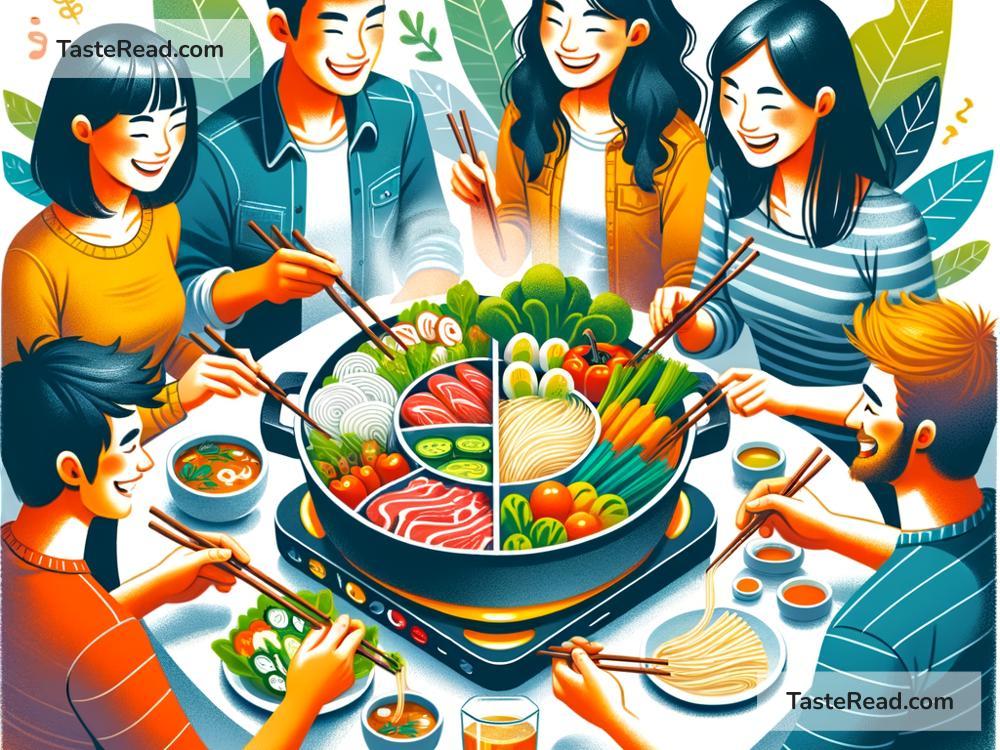In recent years, the Chinese hot pot has transitioned from a traditional meal enjoyed in the cozy confines of homes and neighborhood eateries in China to a globally celebrated dining experience. This journey from local staple to international sensation tells the story of cultural exchange, culinary adaptation, and the universal love for good food shared with good company. Today, let’s explore how the Chinese hot pot became a popular dining experience, indulging in its rich flavors and the warm social interactions it fosters.
Historically, hot pot dates back over a thousand years, rooted in the need to keep warm during the harsh winters. Its earliest iterations were simple: a pot of simmering broth used to cook meat and vegetables. However, as time passed, this method of cooking evolved, adopting various ingredients, broths, and dipping sauces, which allowed different regions in China to develop their unique versions of hot pot. From the spicy broth of Sichuan to the clear and aromatic Mongolian broth, the diversity within hot pot itself is a testament to the vast and rich Chinese culinary landscape.
The first step in the global journey of the Chinese hot pot was through Chinese diaspora communities. As people from China migrated across the world, they brought with them their culinary traditions, including hot pot. In cities with significant Chinese populations, hot pot restaurants began to appear, initially catering to the homesick expatriates craving a taste of home. However, it wasn’t long before the interactive and communal nature of hot pot dining caught the attention of the local populations.
One might wonder, what makes hot pot so appealing to a global audience? At its core, the allure of hot pot can be attributed to its inherently social aspect. Hot pot is not just about the food; it’s about the experience. The preparation and eating process invites interaction, as diners gather around a single pot, cooking their chosen ingredients and sharing dishes. This communal dining encourages conversations and strengthens bonds, making it an ideal choice for family gatherings, friend meet-ups, and even business meetings.
Furthermore, the versatility and customization options of hot pot appeal to a wide range of dietary preferences and restrictions. Unlike other cuisines that might be limited by set recipes, hot pot allows diners to select from a variety of broths, ranging from meaty to vegetarian, and dozens of fresh ingredients including different types of meat, seafood, vegetables, tofu, and noodles. This ‘create-your-own’ aspect ensures that everyone at the table can tailor their meal to their liking, adding another layer to its widespread appeal.
The continued rise in popularity of hot pot globally can be seen in the proliferation of hot pot restaurant chains and the adaptation of the hot pot concept by chefs and restaurateurs around the world. Social media has also played a pivotal role, with images and videos of vibrant hot pot feasts sparking curiosity and desire amongst those unfamiliar with the cuisine. The visual spectacle of a simmering pot filled with a colorful array of ingredients is not only appetizing but also engaging, encouraging people to try it themselves.
In addition to traditional sit-down hot pot restaurants, the concept has expanded to include hot pot buffets, hot pot delivery services, and even DIY hot pot kits, catering to the growing demand and diverse consumer preferences. These innovations have made hot pot more accessible, allowing people to enjoy it in the comfort of their own homes, further cementing its status as a beloved culinary experience.
In summary, the journey of the Chinese hot pot from a traditional meal to a global dining phenomenon is a beautiful example of cultural exchange and adaptability. Its success lies not only in the deliciousness of the food but also in the communal and interactive dining experience it offers, resonating with people across different cultures and backgrounds. As we continue to embrace and celebrate the diverse culinary traditions our world has to offer, the story of the Chinese hot pot serves as a reminder of the power of food to bring people together, one simmering pot at a time.


